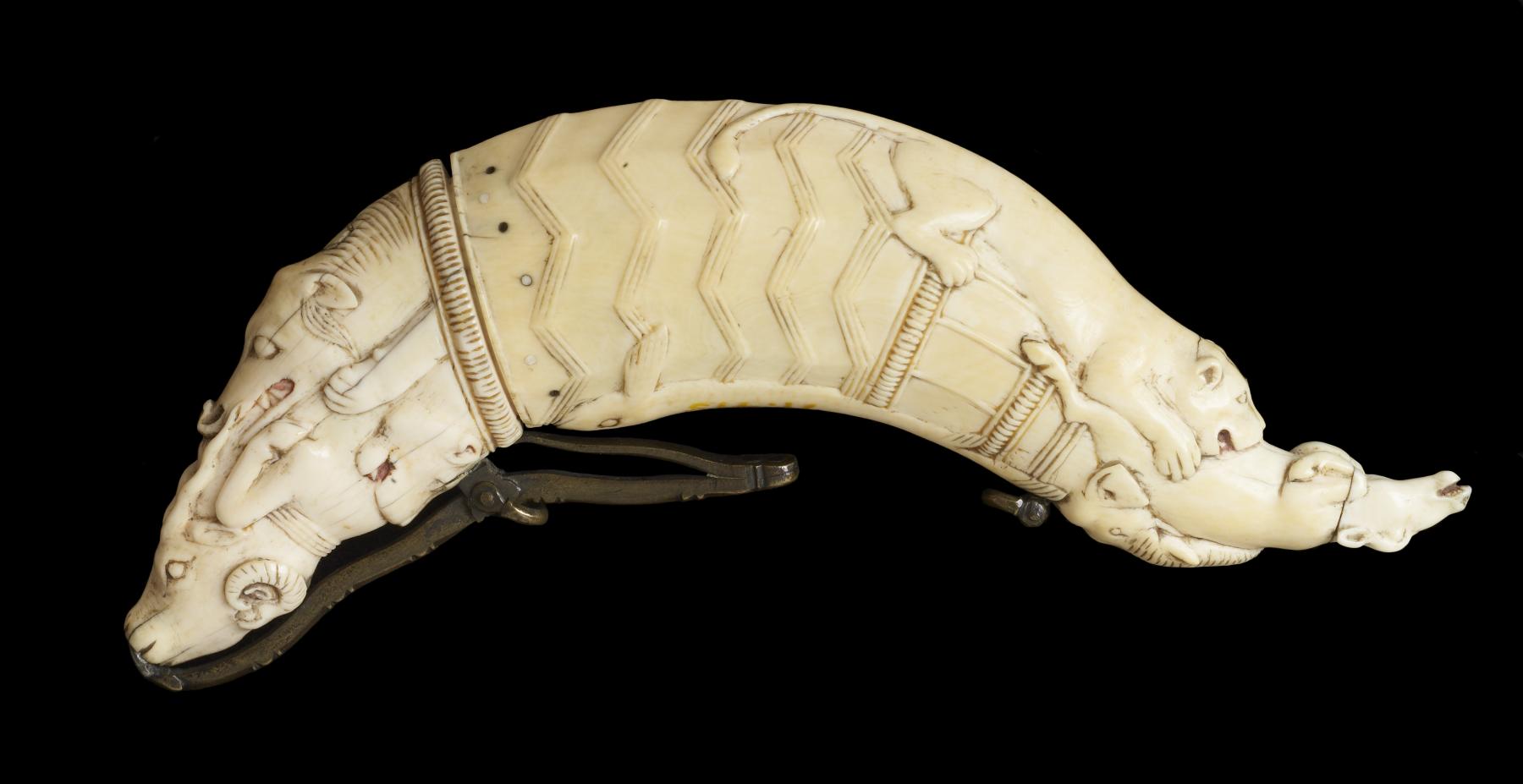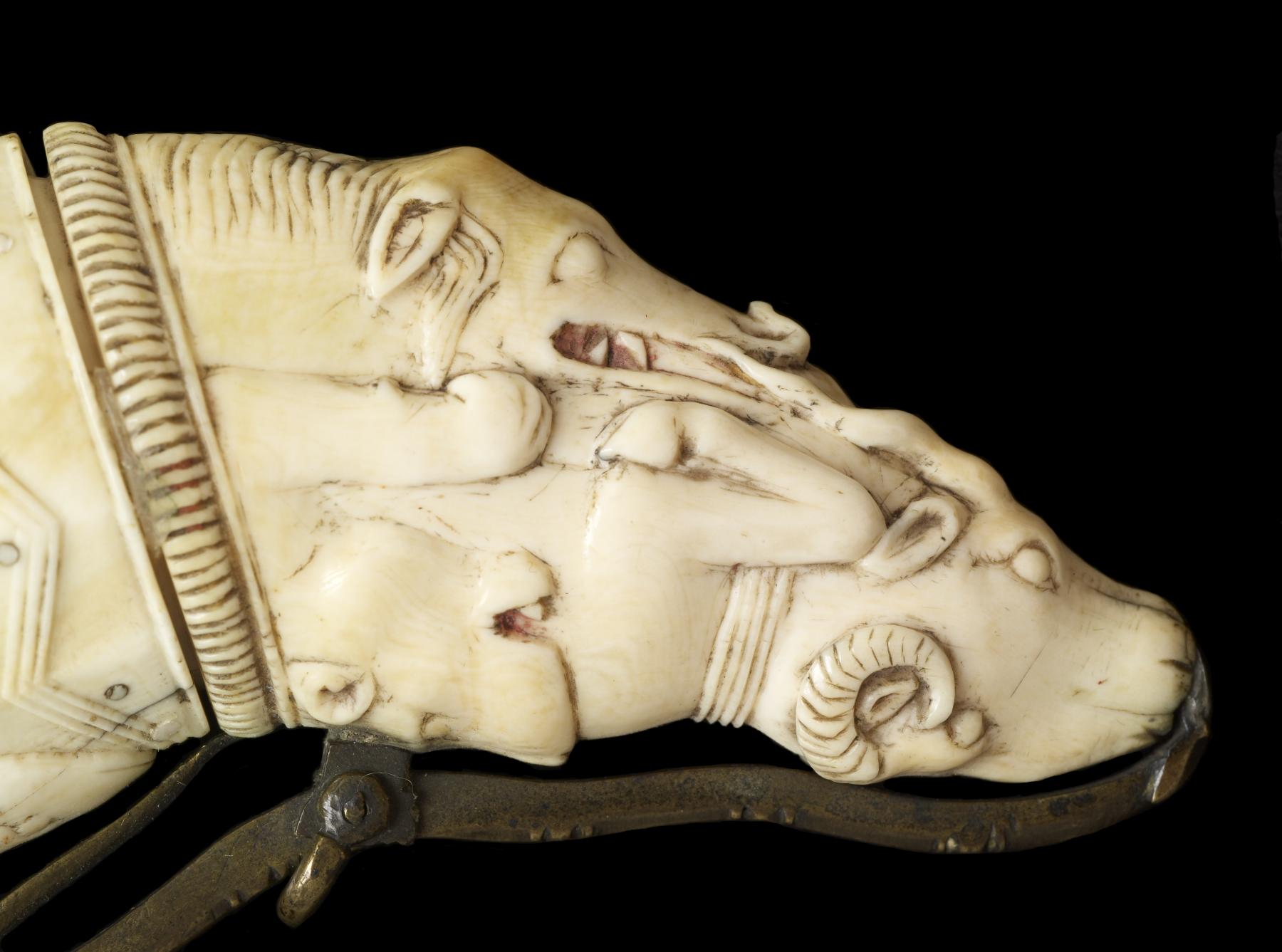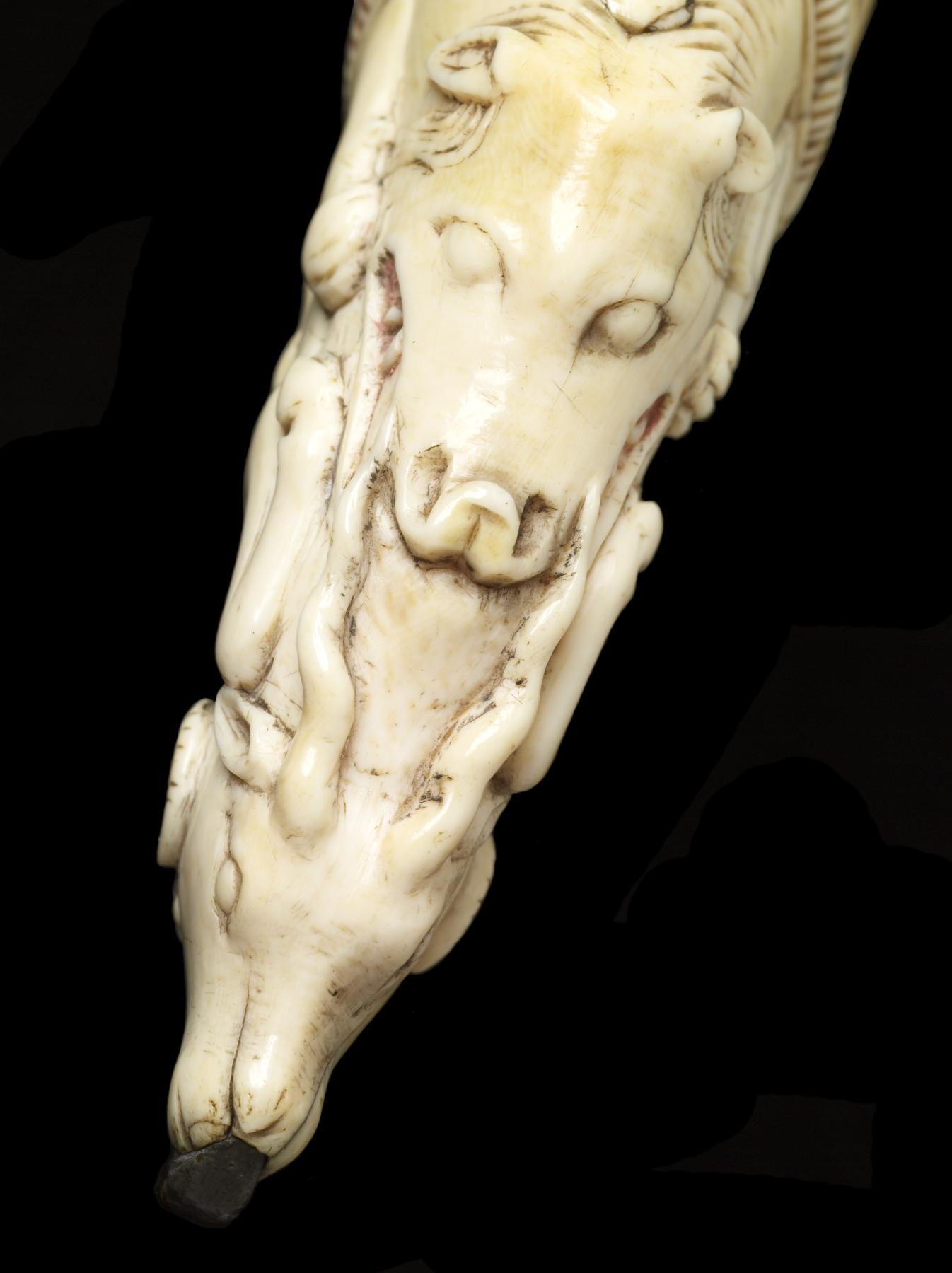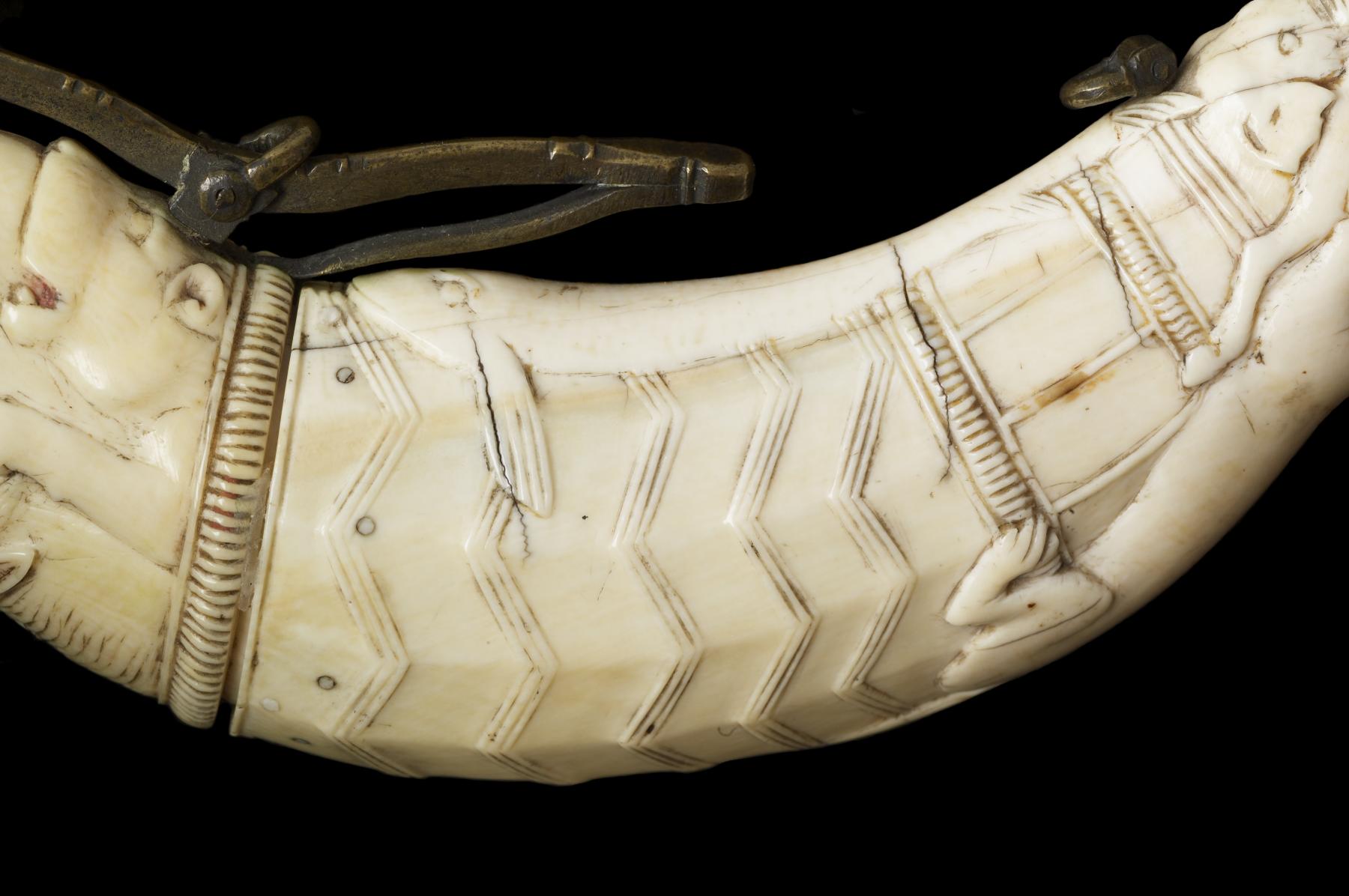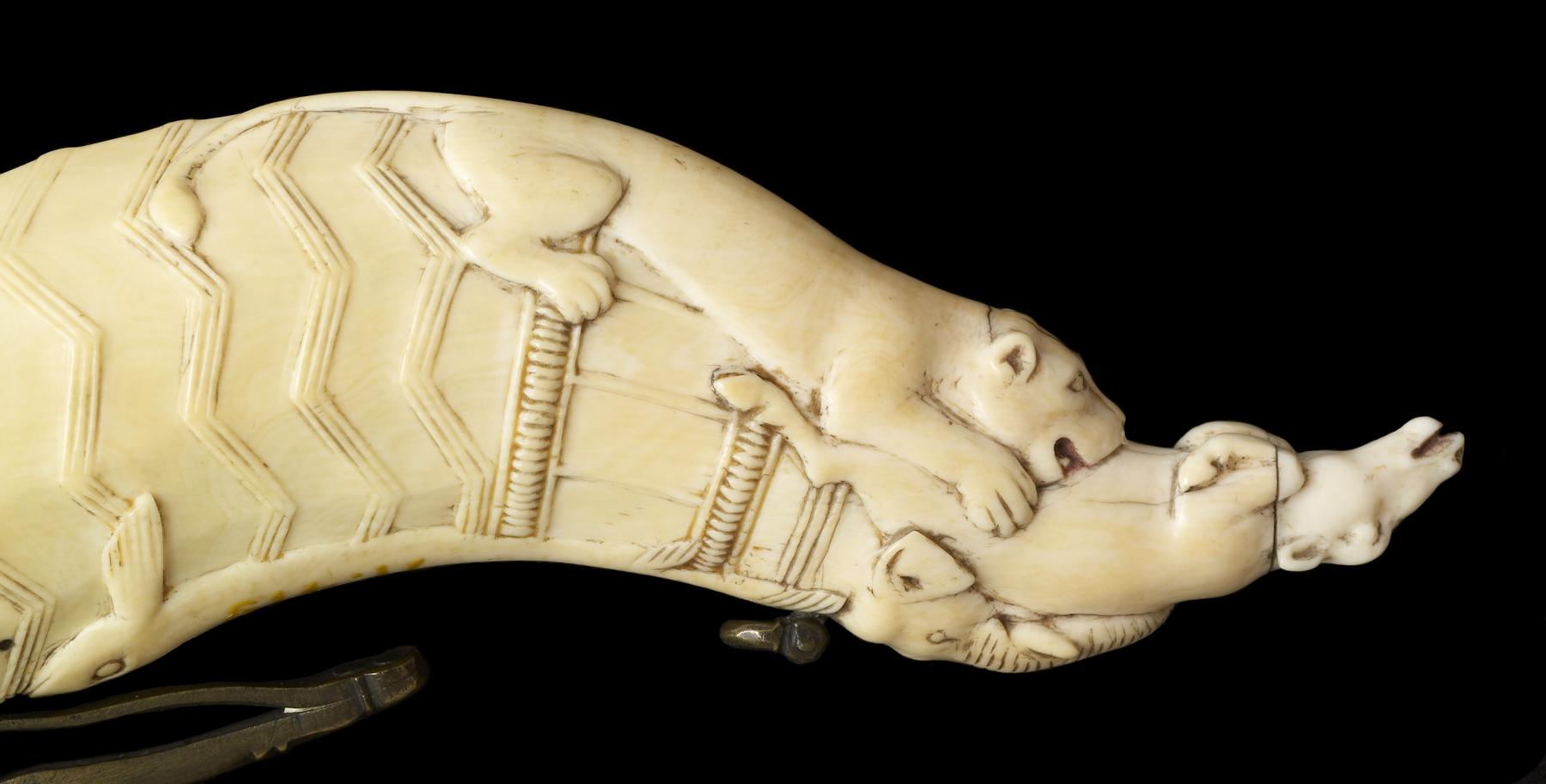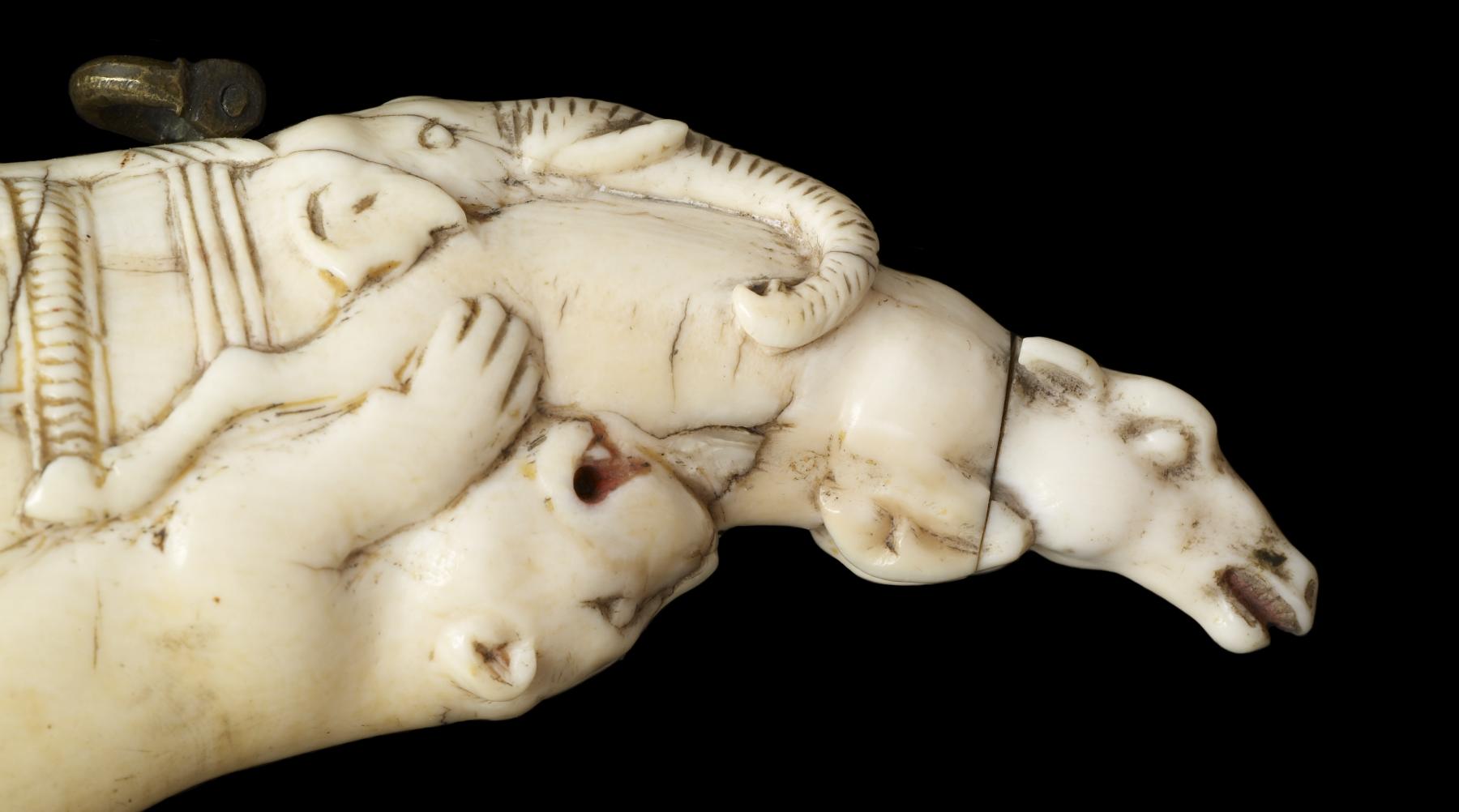Gunpowder Flask
The powder flask (also known as a priming flask) was an essential firearm accessory and held the fine powder needed to make the gun fire. Gunmakers in India during the Mughal era (1526-1858) specialized in carving ivory powder flasks with animal figures. Often, as these two examples, the decoration consists of intertwined and composite creatures that seem to grow out of or attack one another. One such menagerie, on the right-hand flask, includes a cheetah or lion chasing an antelope in the center, and bucks, antelopes, lions, birds, a boar, elephant, and mongoose at the two ends. Many of these animals were regularly hunted (or used for hunts, as with the elephant), in Mughal India.
Provenance
Provenance (from the French provenir, 'to come from/forth') is the chronology of the ownership, custody, or location of a historical object. Learn more about provenance at the Walters.
Max and Maurice Rosenheim [date and mode of acquisition unknown]; Sale, Sotheby's, London, May 9-11, 1923, lot 304; Henry Walters, Baltimore, 1923 [mode of acquisition unknown]; Walters Art Museum, 1931, by bequest.
Geographies
India (Place of Origin)
Measurements
2 7/16 x 6 3/8 x 1 in. (6.2 x 16.2 x 2.5 cm)
Credit Line
Acquired by Henry Walters, 1923
Accession Number
In libraries, galleries, museums, and archives, an accession number is a unique identifier assigned to each object in the collection.
In libraries, galleries, museums, and archives, an accession number is a unique identifier assigned to each object in the collection.
71.419

